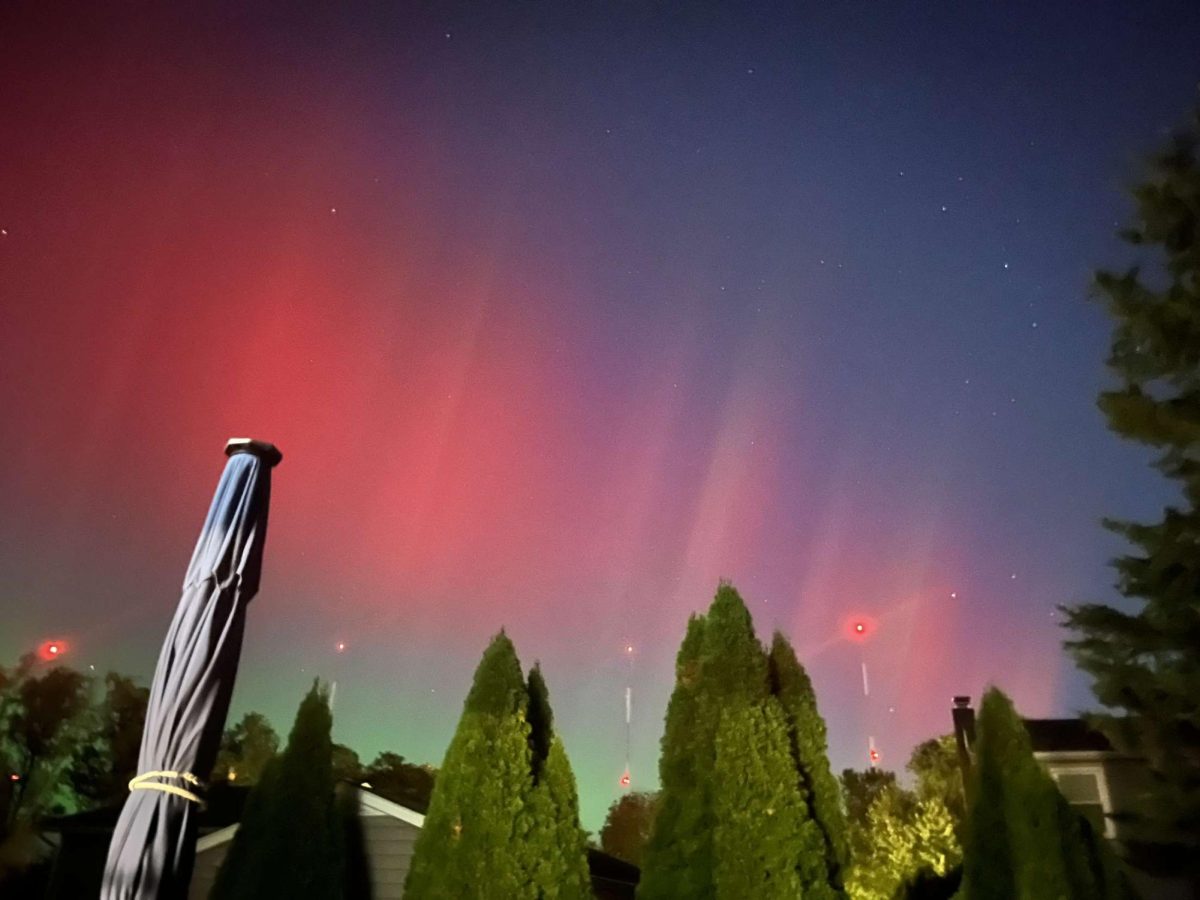On October 10th, those who were outside in the later hours of the night might have been aware of a certain phenomenon that was going on in the sky. Aurora borealis, also known as the Northern Lights, is the name for the bright streaks of color that are often seen in the northern most parts of the world, but what causes them? Why could we only see them in Frederick during that specific period?
Aurora borealis is the effect of two main things, the Earth’s magnetic poles, and the sun’s solar flares. Solar flares are large eruptions of radiation and other particles that occur on the sun’s surface. These particles flow towards the Earth where they then interact with our magnetic field and flow towards the poles. This is why you are most likely to see them at or around the poles of our Earth. Once they consolidate at the poles they interact with gasses in our atmosphere and produce a tiny flash of light. The color of aurora borealis depends on the type of gas they interact with, oxygen for example produces the most common color, a green glow. Pink is produced by nitrogen, red is still oxygen but at a higher altitude, finally blue and purple can be created by hydrogen and helium.
So why were we able to see the Northern Lights in Maryland? Due to an abnormally large solar flare and geomagnetic storm an extreme amount of solar particles were expelled towards Earth. This caused more charged particles to travel into our atmosphere and move further south allowing for sightings as far south as Maryland and Virginia. Sadly the recent storm was abnormally large and therefore uncommon and the last similar account was in October of 2003.
If you were unfortunate enough to have missed this special occasion there are a couple ways to maximize your chances of seeing the next big event. Using websites like NOAA Space Weather Prediction Center can provide helpful insight into the aurora view lines for upcoming days. Another thing to keep in mind is that aurora borealis is easier to see from September to April due to darker and clearer skies. More specifically aurora borealis is more common around the spring and fall equinoxes due to the tilt of the Earth. Hopefully you can use this new knowledge and website to see the Northern Lights next time!

























